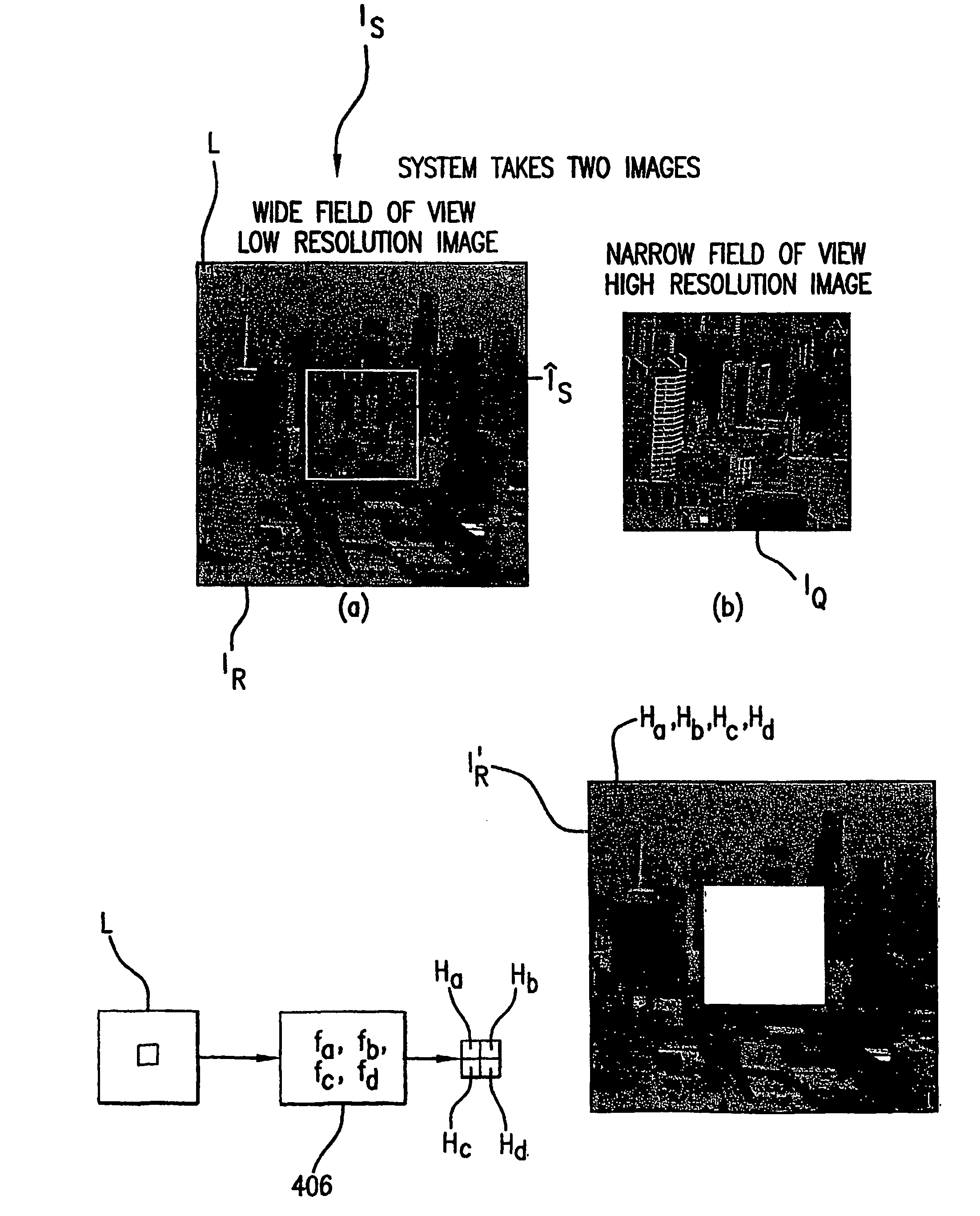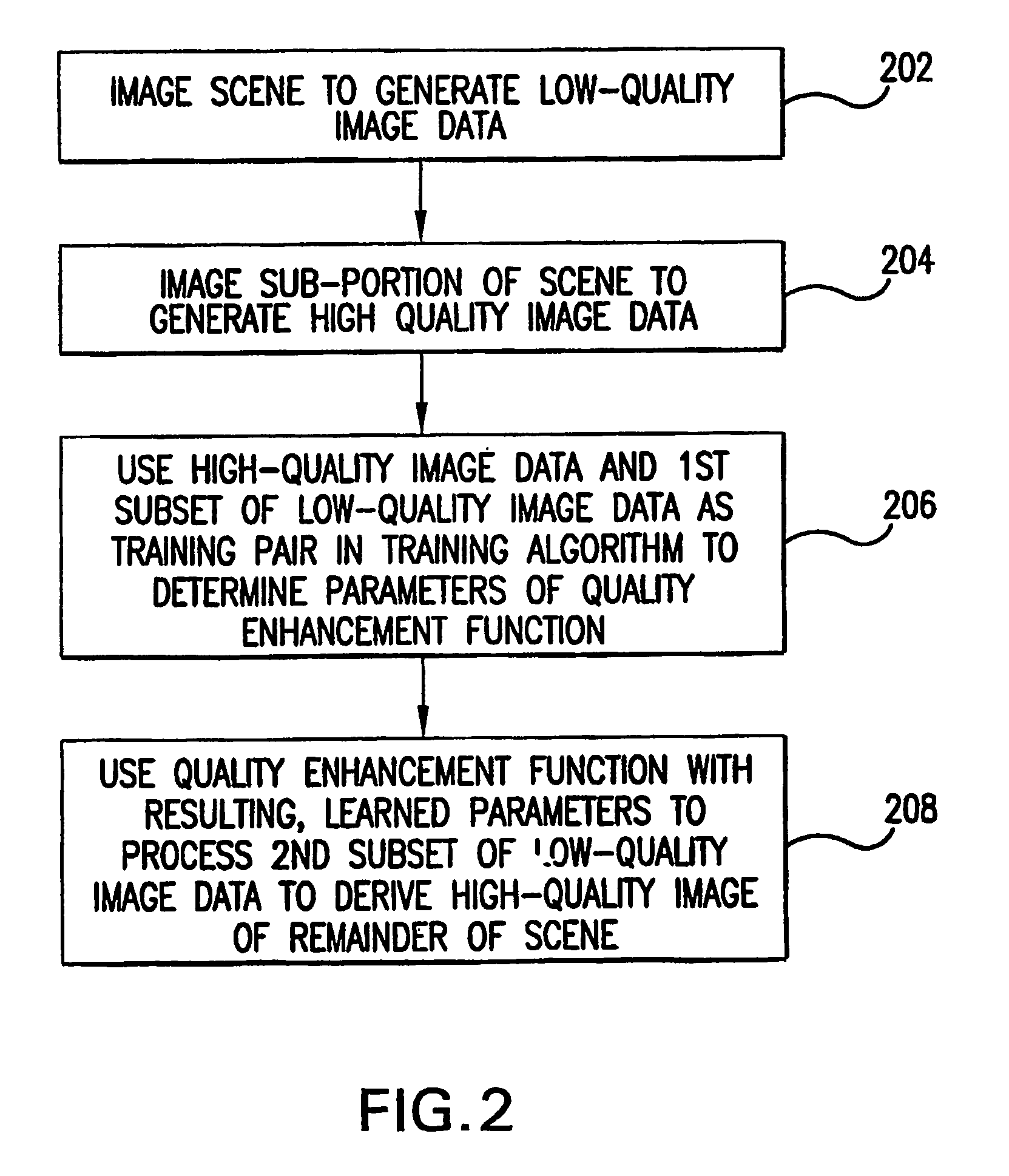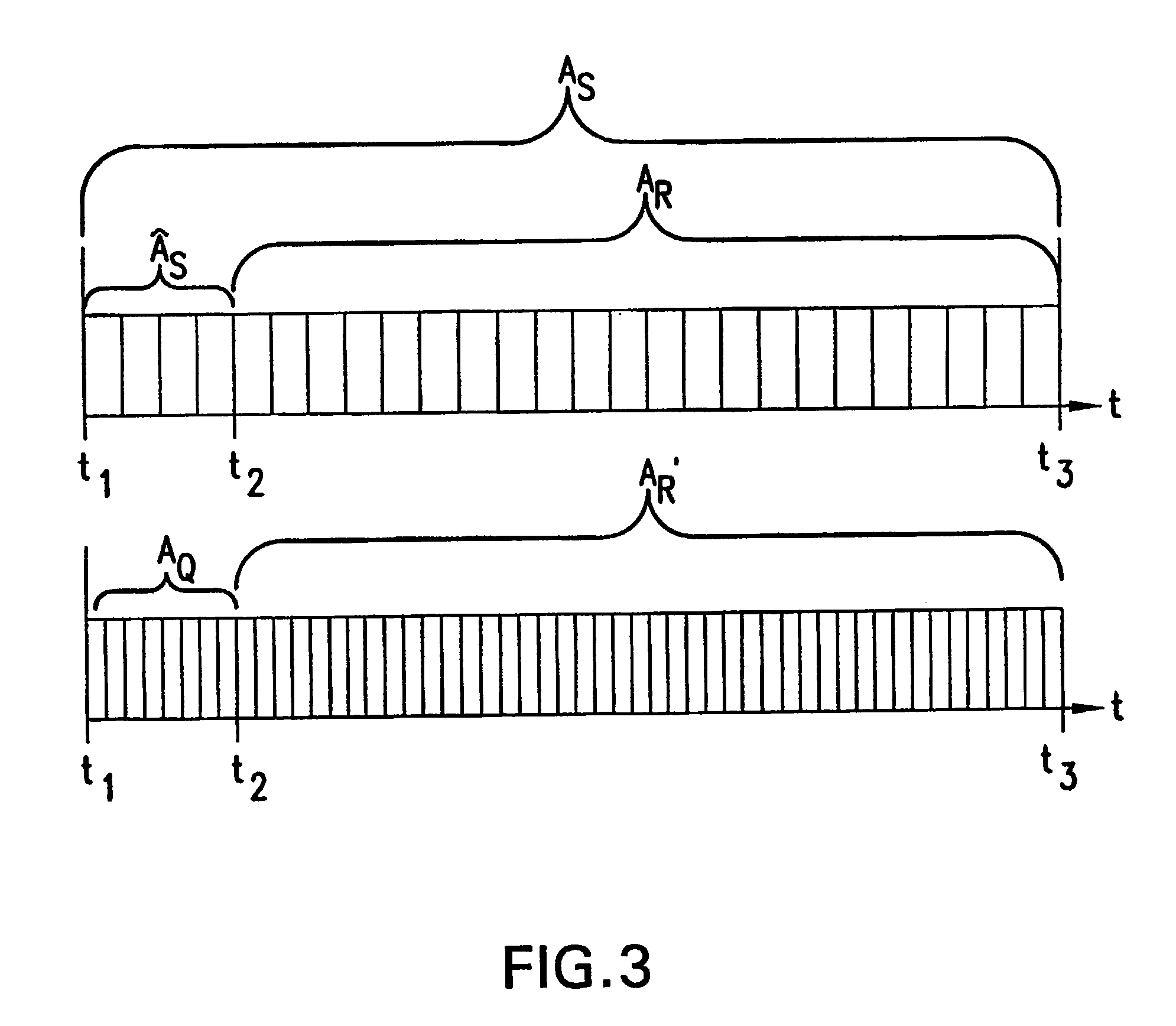Method and system for enhancing data quality
a data quality and data technology, applied in the field of methods and systems for enhancing data quality, can solve the problems of limited spatial resolution, polarization resolution, spectral resolution, and intensity resolution of conventional imagers, and achieve the effect of improving data quality
- Summary
- Abstract
- Description
- Claims
- Application Information
AI Technical Summary
Benefits of technology
Problems solved by technology
Method used
Image
Examples
Embodiment Construction
[0039] In accordance with the present invention, data quality can be enhanced by performing low quality and high quality sampling of the same scene or signal to generate data having a low amount of quality as well as corresponding data having a high amount of quality. The low quality data and the corresponding high quality data—which both represent the same portion of the scene or signal—are used to train a data enhancement function which can then be used to enhance the quality of additional low quality data representing the remainder of the scene or the signal. The term “amount of quality” as used herein can, for example, refer to the spatial resolution of data, but need not be limited to spatial resolution. “Quality” can, in fact, be any characteristic related to the precision and / or accuracy with which the data represents a scene, a light field, an audio signal, etc. For example, an amount of quality can be an intensity resolution (e.g., a number of bits per pixel), a spectral re...
PUM
| Property | Measurement | Unit |
|---|---|---|
| Ratio | aaaaa | aaaaa |
| Resolution enthalpy | aaaaa | aaaaa |
Abstract
Description
Claims
Application Information
 Login to View More
Login to View More - R&D
- Intellectual Property
- Life Sciences
- Materials
- Tech Scout
- Unparalleled Data Quality
- Higher Quality Content
- 60% Fewer Hallucinations
Browse by: Latest US Patents, China's latest patents, Technical Efficacy Thesaurus, Application Domain, Technology Topic, Popular Technical Reports.
© 2025 PatSnap. All rights reserved.Legal|Privacy policy|Modern Slavery Act Transparency Statement|Sitemap|About US| Contact US: help@patsnap.com



